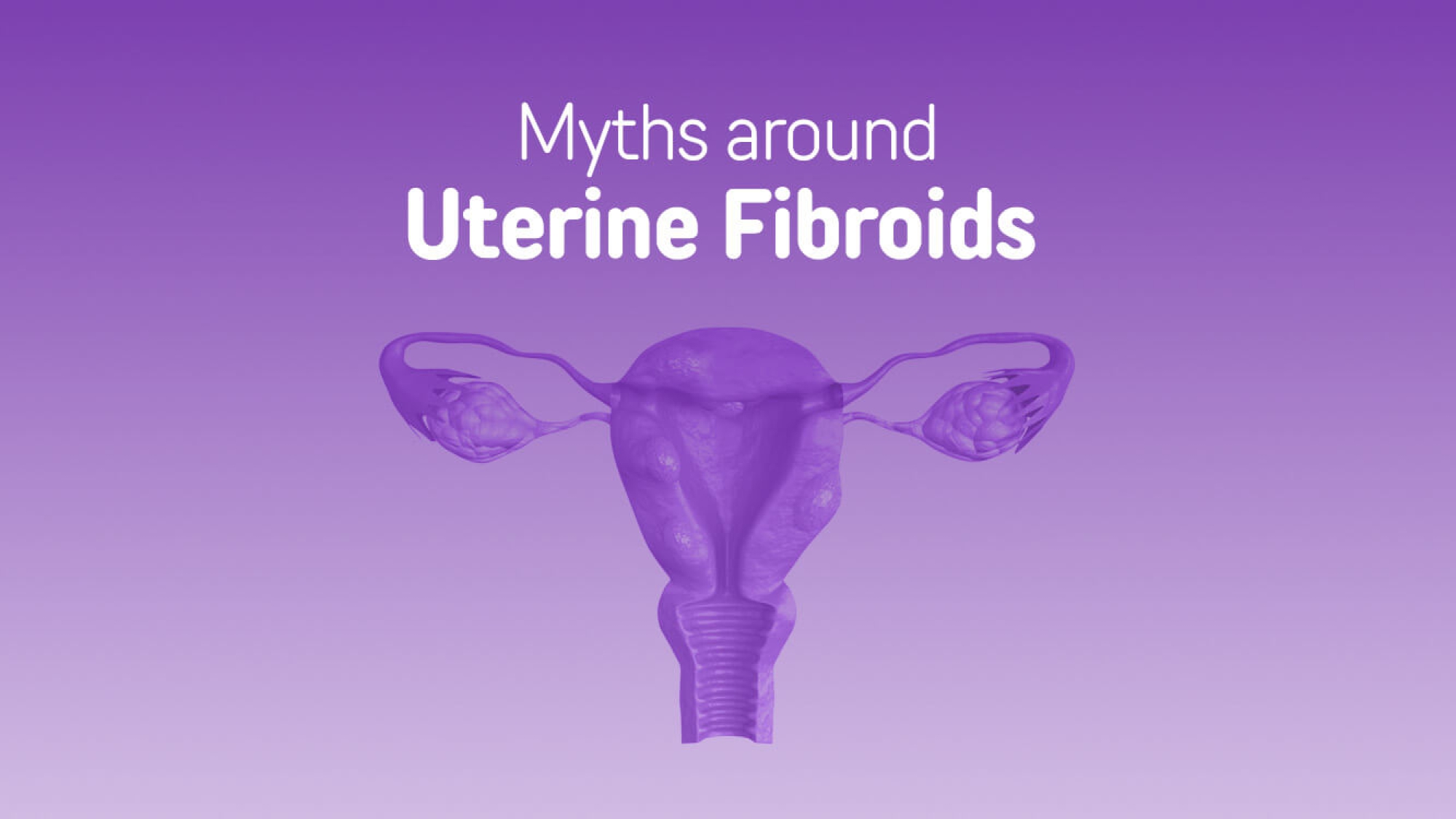Through the years, you might have heard about uterine fibroids from a bunch of women. But are you aware of what uterine fibroids actually mean? Here’s what they mean:
Uterine fibroids are usually benign growths that are made up of the muscle and connective tissue growing from the wall of the uterus. These growths are also called leiomyomas or myomas.
You do not have to worry about uterine fibroids because it is common and rarely threatening. Since a lot of women get uterine fibroids, the odds are you would have heard a lot of things about them.
However, not every word you receive around uterine fibroids holds to be true. There are a lot of myths around uterine fibroids that tend to create fear and anxiety amongst women diagnosed with them.
But before we go ahead and bust some myths around uterine fibroids, here are some uterine fibroid symptoms that you must know.
Symptoms of Uterine Fibroids:
Not every woman with uterine fibroids experiences any symptoms. But when fibroids cause any symptoms, they are usually painful and troublesome. Some of the common signs of uterine fibroids are as follows:
- Pelvic pain
- Extreme menstrual cramping
- Heavy bleeding
- Constipation
- Swelling on abdomen
- Trouble conceiving
- Frequently urinating
- Pain during sex
- Feeling full
- Pelvic pressure
Many other reproductive issues lead to symptoms same as the ones mentioned here. So, if you are experiencing any symptoms, and before you conclude that you have uterine fibroids, make sure you visit your doctor for a correct diagnosis.
7 Common Myths around Uterine Fibroids:
Myth#1: Uterine Fibroids are Cancerous
Fact#1: Uterine fibroids, in most cases, are noncancerous growths. They are also known as benign tumours. One of the reasons people think fibroids are cancerous is because it is a term linked with cancer. But tumours are abnormal tissue masses that are mostly non-cancerous. Fibroids differ in size and can sometimes cause distressing symptoms that impact the quality of life. In rare circumstances, these still do have the potential to turn into cancers. Generally, uterine fibroids may get treated with medication or minimally invasive procedures.
Myth#2: Uterine Fibroids Can Lead to Infertility
Fact#2: A good number of patients believe that there is a linkage between uterine fibroids and infertility. However, not all fibroids affect fertility. The size and location of the fibroids are key factors. Uterine fibroids may complicate the pregnancy but in most cases do not pose a problem in conceiving. Many factors determine your odds of getting pregnant and carrying the pregnancy to full term. If your uterine fibroids have been causing fertility issues, book your consultation with Dr Manish Banker at Banker IVF to get the best treatment and receive the joy of parenthood.
Read: Uterine Fibroids – Symptoms and Impact on Fertility
Myth#3: Affect Only Women over 30-40 Years of Age
Fact#3: You can get uterine fibroids anytime during your child-bearing years. However, you are at higher risk of developing uterine fibroids in your 30-40s as they are linked to hormones. Women in their teens and 20s can get uterine fibroids, and rarely, women in their 50s can also get them. Many women having uterine fibroids may not even know about it since they’re asymptomatic. Once you reach menopause and your estrogen and progesterone level fall, your risk of getting uterine fibroids reduces.
Myth#4: Hysterectomy is the Only Treatment for Uterine Fibroids
Fact#4: You may or may not need treatment for uterine fibroids since that depends on the number and size of your fibroids. If you do not have severe and painful symptoms, your doctor may advise you to wait and watch. But if symptoms are painful and intrude with your health and daily routine, then there are several options to treat uterine fibroids other than hysterectomy. Hysterectomy is ideal in severe cases of uterine fibroids.
Myth#5: Leads to Heavy Bleeding and Extreme Pain during Periods
Fact#5: Not always. Heavy or painful periods are widely known uterine fibroids symptoms. However, these symptoms do not affect all women who have fibroids. Constipation, bladder dysfunction, and backaches are also common symptoms. Small fibroids may not cause any symptoms, and even bigger fibroids do not always exhibit heavy menstrual bleeding or pelvic pain. The only way to learn if you have fibroids is to have a complete evaluation with a doctor.
Myth#6: If Uterine Fibroids are Not Treated, They Will Expand
Fact#6: As stated above, fibroids vary in size. Many fibroids grow huge enough to cause abdominal swelling, while some are too small, do not grow and lead to any symptoms, and some grow to an extent and then stop expanding. If you have small, asymptomatic fibroids, your doctor may defer treatment while your condition is closely watched. It’s tough to anticipate whether your fibroids will expand or not. Even though it’s rare, a fibroid may rupture, necessitating immediate medical attention.
Myth#7: Fibroids Have Consistent, Defined Symptoms
Fact#7: As said before, uterine fibroid symptoms are often mistaken for other common women’s health issues. Furthermore, no two women will have the same symptoms. Some women may not feel any discomfort or pain while some experience extreme distress. As a result, there aren’t just one or two tell-tale symptoms that indicate you have fibroids. The most common symptoms are heavy menstrual bleeding, long cycles, pelvic pain, and discomfort, but other symptoms can range from mild to severe.
